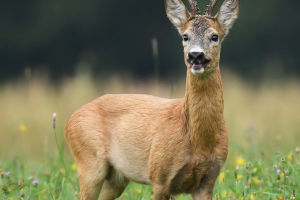Brown bears, also known as grizzly bears, are one of the most iconic and fascinating species of bears in the world.
They are found in various parts of the world, including Europe, Asia, and North America.
These majestic animals are known for their large size, powerful build, and distinctive coat of fur.
Firstly, let's look at the biology of brown bears.
Brown bears are the second-largest species of bear, after polar bears. They can grow up to 8 feet tall when standing on their hind legs and weigh up to 1,500 pounds.
Brown bears have a distinctive hump on their shoulders, which is a result of their massive muscles needed to dig for food.
They have sharp claws that can be up to 4 inches long, which they use to dig roots, catch fish, and defend themselves from predators.
Brown bears have a keen sense of smell, which they use to locate food and identify other bears.
Brown bears are omnivorous, meaning they eat both plants and animals.
Their diet consists of berries, nuts, roots, insects, fish, and small mammals.
In areas where they coexist with humans, they may also prey on livestock and raid garbage dumps.
Brown bears are known for their ability to hibernate for up to 7 months a year.
During hibernation, their heart rate and metabolism slow down, and they live off their stored fat.
Next, let's examine the behavior of brown bears. Brown bears are solitary animals, except when mating or raising cubs.
They are active during the day and night but are more active at dawn and dusk.
Brown bears are territorial and will defend their home range from other bears. They communicate with each other through body language, vocalizations, and scent marking.
Brown bears are also known for their aggressive behavior when threatened, and they can be dangerous to humans.
Finally, let's discuss the conservation of brown bears.
Brown bears are listed as a threatened species in many parts of the world due to habitat loss, hunting, and conflicts with humans.
In some areas, populations have been decimated by hunting for their fur and body parts, which are used in traditional medicine.
In other areas, habitat loss due to development and human encroachment has led to declines in brown bear populations.
Conservation efforts include habitat protection, law enforcement, and public education. In some areas, brown bears have been successfully reintroduced to their former range.
Brown bears are fascinating creatures that are an important part of many ecosystems.
Their biology, behavior, and conservation are all important topics that deserve our attention and protection.
By understanding and respecting brown bears, we can help ensure their continued survival and contribute to the health of our planet's ecosystems.


